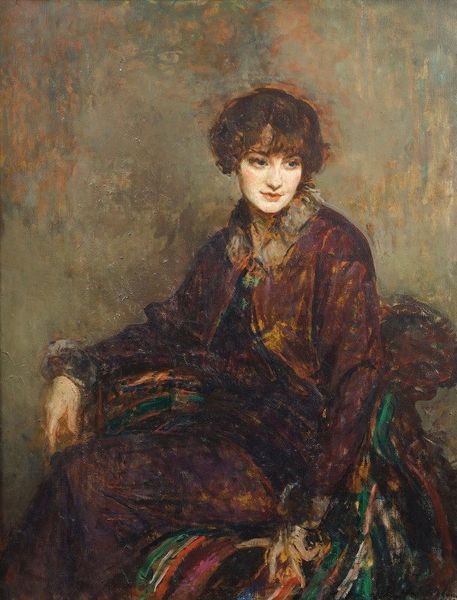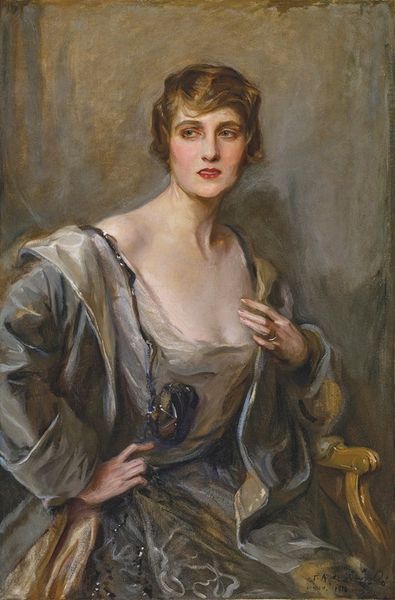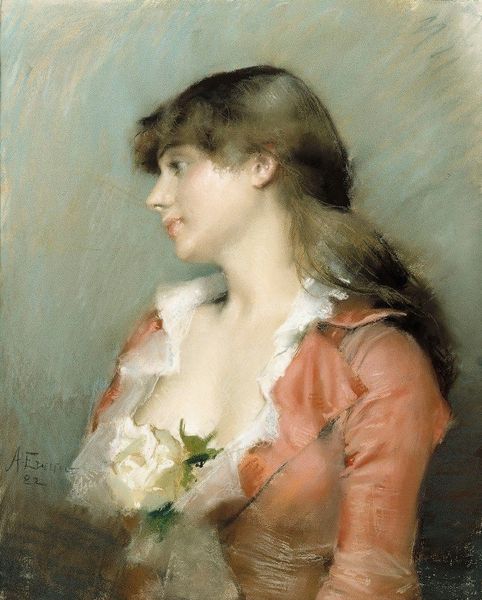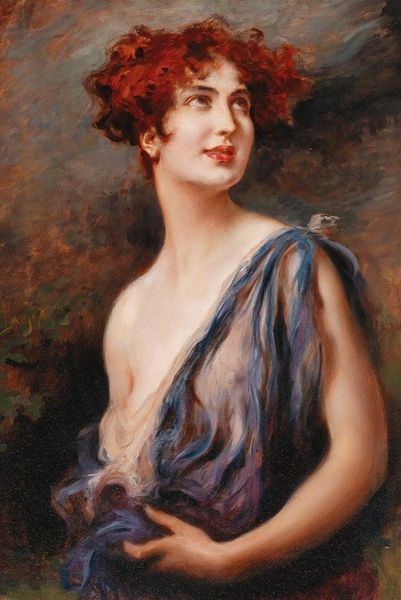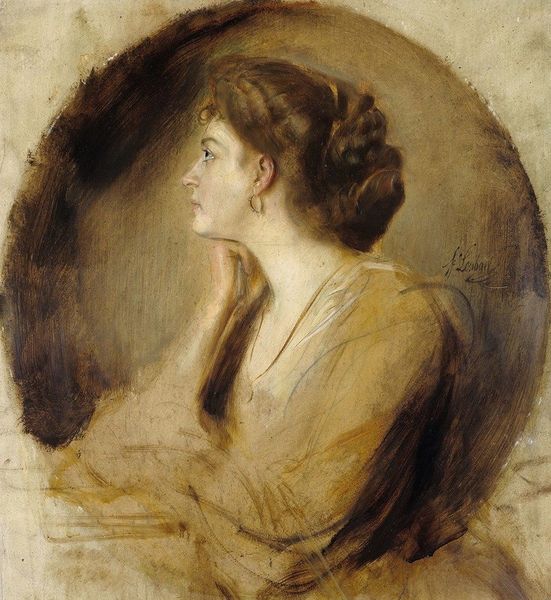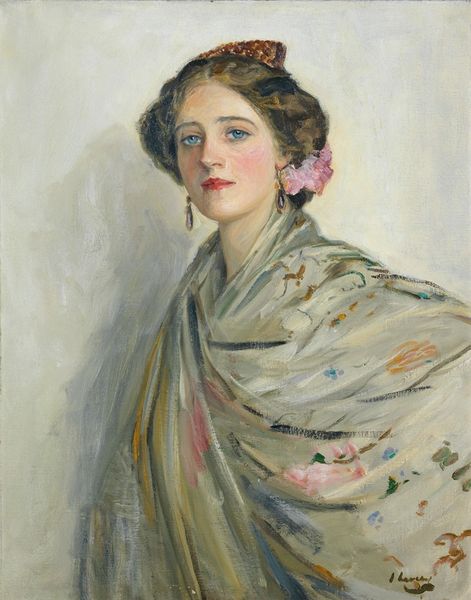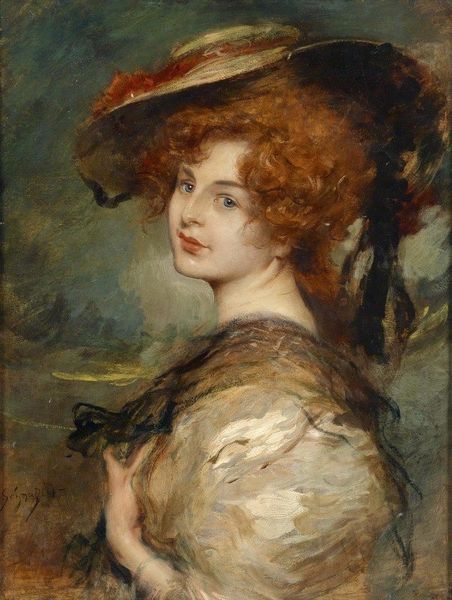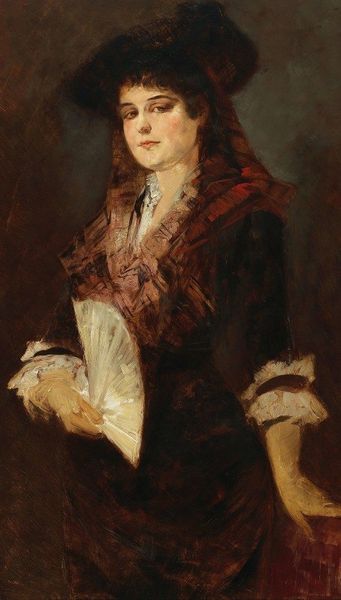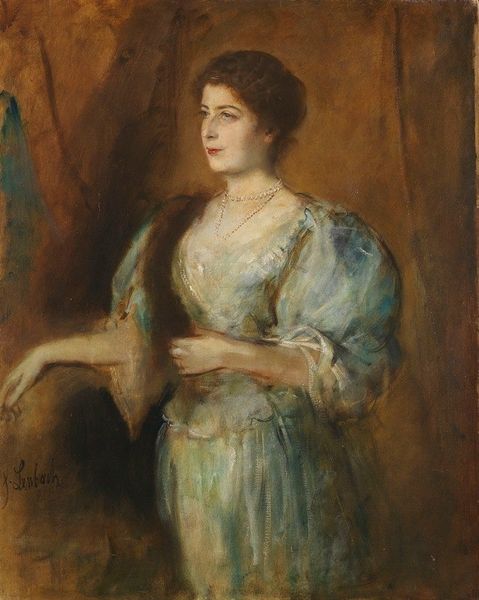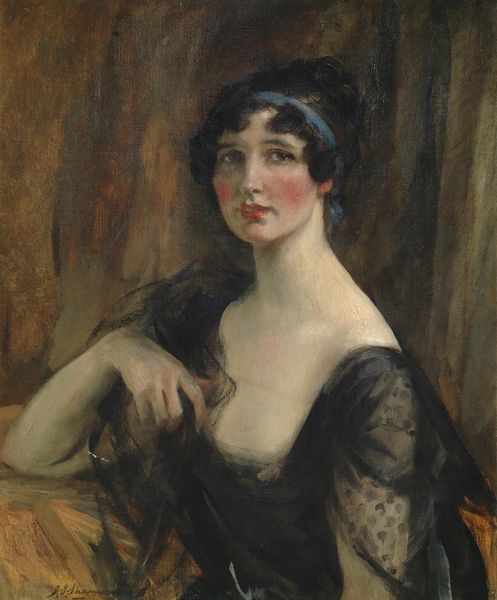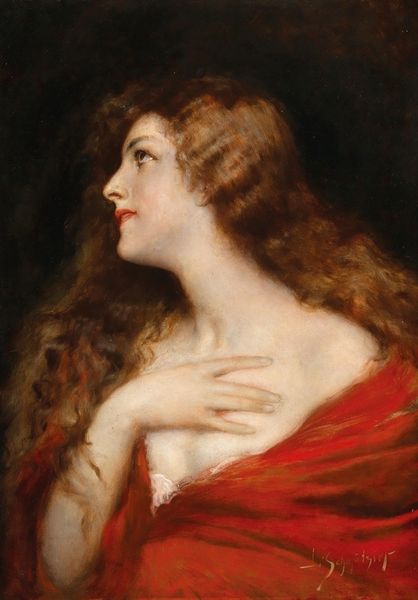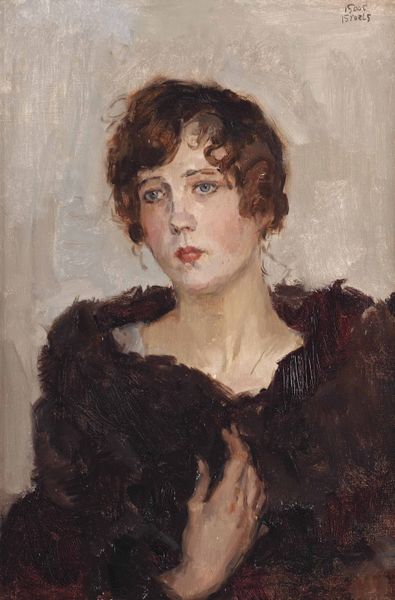
Copyright: Public Domain: Artvee
Curator: Standing before us is "Lily Elsie," an oil painting rendered in 1916 by James Jebusa Shannon. What strikes you immediately? Editor: The portrait has a melancholic quality; the somber palette and averted gaze certainly contribute to a feeling of quiet introspection, even resignation. Curator: That melancholy could stem from several places. Lily Elsie was a prominent stage actress, and it’s easy to think about the performance of identity inherent to celebrity, especially for women. Consider how actresses were perceived, the limitations on their autonomy both onstage and off. This could be read as an attempt to humanize Elsie. Editor: You know, formally, the treatment of light reinforces this interpretation. See how Shannon contrasts the areas of pronounced light with soft shadows. It's chiaroscuro that sculpts her face, lending volume and revealing form in this way, and creating an illusion that she is emerging from this dark space around her. The impasto work brings the figure out more towards the viewer. Curator: Precisely. There's a tension here. Shannon captures both her public image and perhaps something deeper, something concealed beneath the surface. What does it mean to be known only through the lens of public performance, and how does one then reclaim or redefine the self? How complicit were women during the Romantic era? Editor: Do you find that this reclamation becomes a negotiation of a binary? Does Shannon fall short? I am of the understanding that the leaf crown and single flower she wears evoke the traditions of romanticism, further obscuring who she may be by cloaking her with further tradition. Curator: Perhaps, but is Shannon providing that tradition to emphasize it as such? Think about this painting alongside other portraits of the era. It encourages a dialogue about women and fame, offering insight into both personal experience and social dynamics of that moment. Editor: An insightful painting to observe! Curator: Indeed, Shannon invites us to contemplate both what is visible and what remains obscured.
Comments
No comments
Be the first to comment and join the conversation on the ultimate creative platform.
